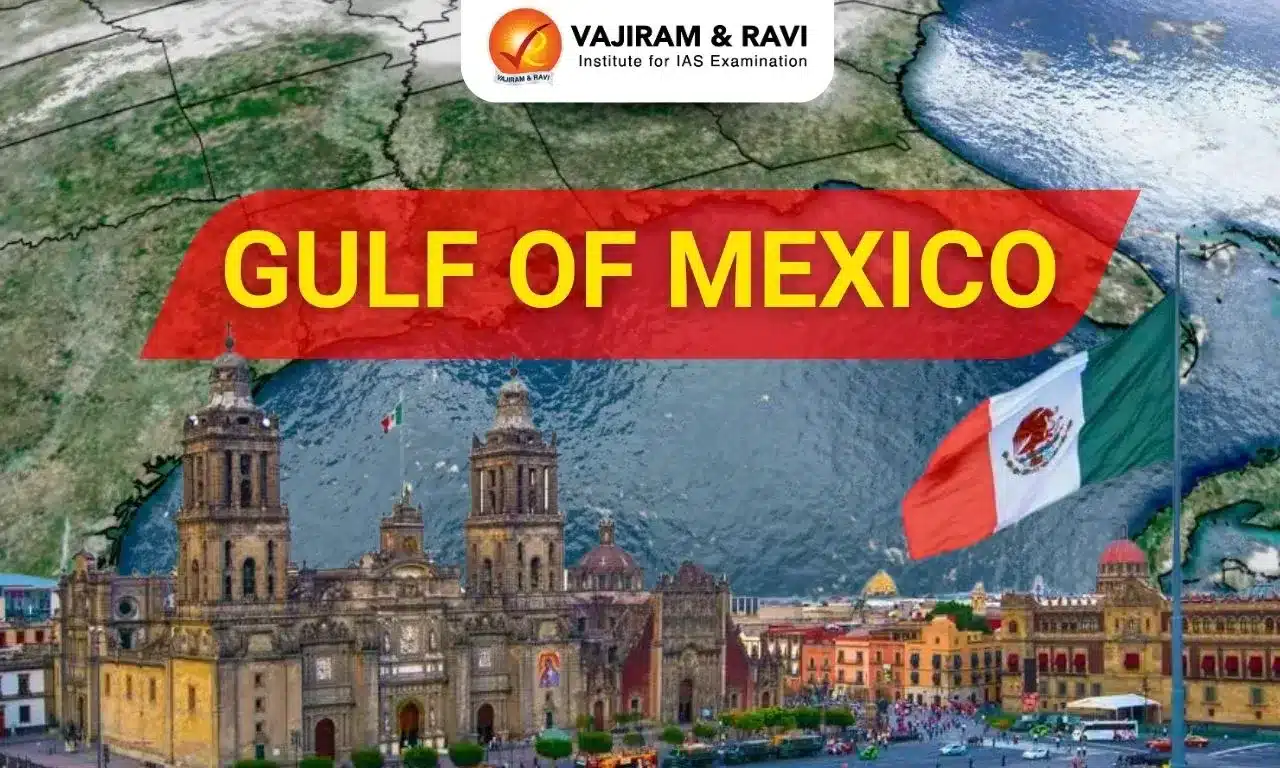About Gulf of Mexico:
- It borders the southeastern coast of North America.
- It is connected to the Atlantic Ocean by the Straits of Florida, running between the peninsula of Florida and the island of Cuba, and to the Caribbean Sea by the Yucatán Channel, which runs between the Yucatán Peninsula and Cuba.
- It is a marginal sea of the Atlantic Ocean and the world’s largest gulf. It is often referred to as the “Mediterranean of the Americas”.
- It was formed as a result of seafloor subsidence due to the movement of the tectonic plates.
- It is somewhat shallow, along the coastal continental shelf areas, and has an average depth of 1,615 m.
- Climate:
- Its climate varies from tropical to subtropical type.
- This region experiences some of the most severe weather in the world, including major hurricanes, tornadoes, and thunderstorms.
- Rivers: The Mississippi and the Rio Grande are the major rivers draining into the gulf.
- Natural resources: The shallow continental shelf regions of this Gulf contain large deposits of petroleum and natural gas.
Q1:Where is the Yucatan Peninsula?
It is a Northeastern projection of Central America which is lying between the Gulf of Mexico to the west and north and the Caribbean Sea to the east. The peninsula is almost wholly composed of beds of coralline and porous limestone rocks.
Source: IE
Last updated on December, 2025
→ Check out the latest UPSC Syllabus 2026 here.
→ Join Vajiram & Ravi’s Interview Guidance Programme for expert help to crack your final UPSC stage.
→ UPSC Mains Result 2025 is now out.
→ UPSC Notification 2026 is scheduled to be released on January 14, 2026.
→ UPSC Calendar 2026 is released on 15th May, 2025.
→ The UPSC Vacancy 2025 were released 1129, out of which 979 were for UPSC CSE and remaining 150 are for UPSC IFoS.
→ UPSC Prelims 2026 will be conducted on 24th May, 2026 & UPSC Mains 2026 will be conducted on 21st August 2026.
→ The UPSC Selection Process is of 3 stages-Prelims, Mains and Interview.
→ UPSC Result 2024 is released with latest UPSC Marksheet 2024. Check Now!
→ UPSC Prelims Result 2025 is out now for the CSE held on 25 May 2025.
→ UPSC Toppers List 2024 is released now. Shakti Dubey is UPSC AIR 1 2024 Topper.
→ UPSC Prelims Question Paper 2025 and Unofficial Prelims Answer Key 2025 are available now.
→ UPSC Mains Question Paper 2025 is out for Essay, GS 1, 2, 3 & GS 4.
→ UPSC Mains Indian Language Question Paper 2025 is now out.
→ UPSC Mains Optional Question Paper 2025 is now out.
→ Also check Best IAS Coaching in Delhi

















